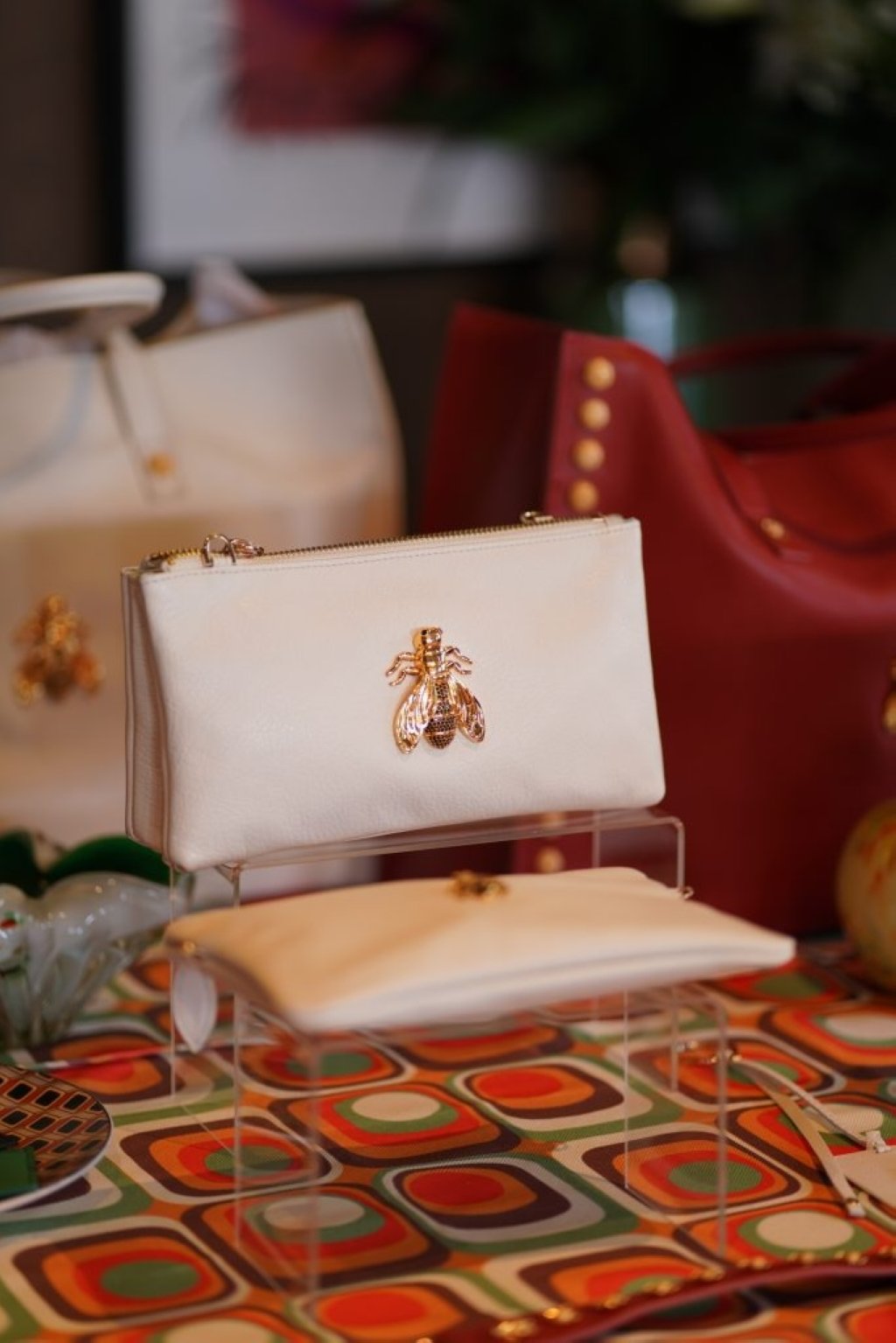© Turkuvaz Haberleşme ve Yayıncılık 2026
Founded in 2005, the Osm@n brand has brought the Ottoman era and its sultans into contemporary fashion with a fresh and modern interpretation. The brand has consistently blended art, trends, history and technology in its collections. Most recently, Osm@n collaborated with Mesele Slow Design to create a special capsule collection. This collaboration united Selen Öztürk, the founder of Mesele and a jewelry designer inspired by powerful female figures and mythology, with Sedef Çalarkan, founder and designer of Osm@n, known for her strong leather and accessory designs. The result was a highly talked-about collection last week featuring luxurious handcrafted leather bags and delicately designed, timeless jewelry.
This limited-edition collection consists of pieces that embody the power of modern women, drawing inspiration from the past while reflecting the present. After the launch of this capsule collection in Istanbul, I met with Sedef Çalarkan to learn more. “The time when she founded her brand and when the brand became very trendy was also when I was in university and starting my career in journalism,” I explained. As a fashion enthusiast, I had followed her work with great interest.
We met at a popular cafe in Nişantaşı to discuss her latest collection and projects. She started by saying,
“I am a concept designer and a brand professional. Every part of the design process excites me. I don’t just define myself as a brand designer. Today, I can design the entire 360-degree communication for a brand. Tomorrow, I could design products for an international brand. I might produce a limited special collection for Osm@n. Or, like today, I could collaborate with another brand to create a capsule collection.”
When I asked her about her education and career, she smiled and said,
“There is so much to tell. Just imagine, Osm@n has been around for 20 years now and there was a whole career before that.”
Çalarkan studied tourism and hospitality at a university in the U.K. However, she always had a passion for fashion and design, attending seminars and courses alongside her main studies. When her family brought the Fred Perry brand to Türkiye, her interest in fashion became even more tangible. Later, her family launched a multibrand luxury store, where she handled international brand acquisitions.
She was also involved in bringing Louis Vuitton to Türkiye. Çalarkan shared, “Learning the business properly is invaluable. I never minded starting from the bottom. I began as a sales associate at Louis Vuitton and it was one of the best decisions I ever made. I learned firsthand how to interact with luxury customers and what kind of experience they expect. This experience helped me quickly rise to store manager. It was a period full of valuable lessons.”

“As I mentioned, I held managerial roles at various fashion and luxury brands. Then I transitioned into media, focusing on interior design. I started working at Vizyon Decoration magazine. Thanks to the architects and designers I met there, I discovered my own design talents,” she continued.
It was around this time that the idea of working with Ottoman themes emerged. One of the first people she shared the idea with was graphic designer Kemal Edes, who warmly embraced the concept and created the logo and motifs for the brand. After finalizing the idea, she immediately applied to Who's Next Paris. The positive reception there was very encouraging. Upon returning to Türkiye, Osm@n designs were launched in Decorium stores.
She emphasized her philosophy as “To keep a brand unique and innovative, you must always bring it together with new perspectives. My latest capsule collection is no different. All my upcoming projects follow this approach. I always describe myself as an ‘idea designer’ or ‘concept designer.’ Each of us has unique and valuable qualities, and with the right collaborations, I believe we will all grow stronger together.
When I asked her about the biggest challenge she faces as a designer, she said: “To be honest, creative minds around the world are always different. They perceive things on a different level and often have a more sensitive side. I believe these creative talents need to be supported by the right financial powers. I have always stood by this belief. I am sure many designers in different fields think similarly. This is often the hardest part for them.”
